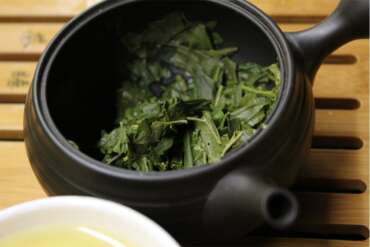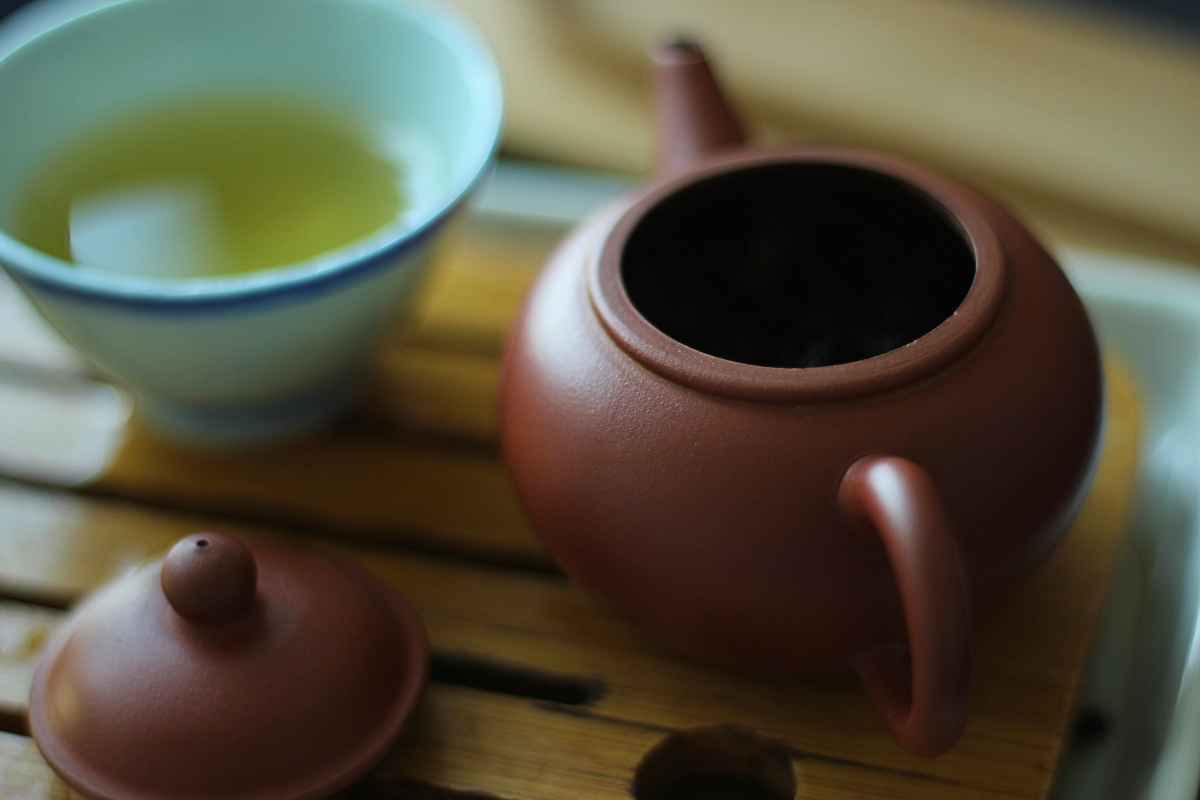During Spring break, I want to do a proper tasting session every day. You can read all about my plans and the other teas I tried this week in this post.
About a month ago, I bought a matcha set in Palais des Thés and I received a small tin with some Sencha Ariake. I really love green tea so that’s the main reason I picked this sencha tea for my fourth tea session this week.
Sencha Ariake
On Palais des Thés’ website, they describe it as tea that is “sweet yet invigorating, with a grassy and slightly salty flavour. A perfect gentle introduction to the joys of Sencha teas.”(Source) The tea itself is produced in Kyushu Province in Japan and is one of the smoothest Sencha teas. Sencha tea is also one of the most famous green teas from Japan. It is produced by steaming, rolling and drying tea leaves. This results in dark green needle-shaped tea leaves, as you can see on the picture of the dry leaves. Green tea is mainly unoxidised and in Japan, the tea leaves are mostly steamed to halt the oxidation process. This is different from Chinese green tea because a lot of Chinese green teas are baked (in a pan) and not steamed.

You can clearly see that the dry leaves have a typical dark green colour and that they are needle-shaped.

The leaves after the final infusion have unfurled and have a brighter and vibrant green colour.
Tea tasting
Brewing details

- Water 80°C
- 4g of tea leaves for a 200ml Tokoname Kyusu
- 1 rinse
- 6 steeps (with different steeping times)
Before rinse
The smell of the dry leaves is almond nuts in combination with fresh vegetables.
After rinse
The smell of the wet leaves is slightly different. The almond nuts are almost gone and it’s mainly vegetal notes now.
Steeping
1st steep (45 sec): light hints of almond nuts. This steep is really smooth with an undertone of nuts. The aftertaste is very light.
2nd steep (25 sec): light nuttiness from the start and some vegetal notes as well. Sweetness is also noticeable.
3rd steep (30 sec): the sweetness is gone and it’s mainly vegetal notes now. Underlying almond nuts.
4th steep (35 sec): the almond nuts are barely noticeable so it’s mainly vegetal flavours. Not that prominent. In general, this is a subtle steep.
5th steep (40 sec): I’m pretty sure I used too little tea leaves because I’m only getting very light flavours now. Very light almond nuts in combination with vegetal notes.
6th steep (1 min): the same as steep 5. Nuts and vegetal flavours that are barely noticeable.

1st steep

2nd steep

3rd steep

4th steep

5th steep

6th steep
Conclusion
I definitely used too little leaf. The first two steeps were amazing so it’s a shame I did not use enough leaf this session. It’s the first time I’ve brewed this tea so I really want to taste it again when the leaf-to-water ratio is higher. The first two steeps were really promising and I think it’s a decent green tea. The almond nuts were really pleasant to drink.




